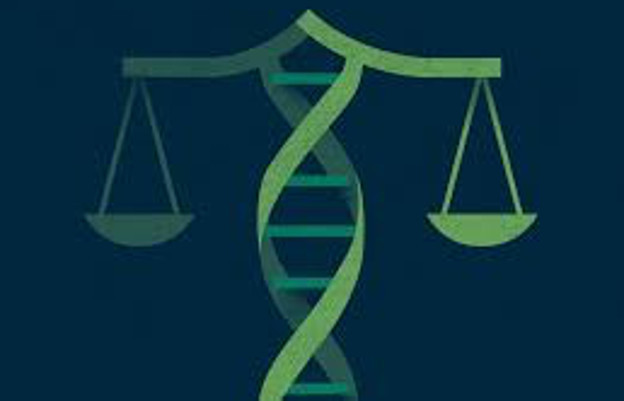Lives and semilives in the balance: A brief dossier on the brink of biohazard

Perhaps too much of bio-poetic work (and commentary) risks falling into a starry-eyed vision of a blissfully ever-expanding genetic future. As if in response, bio-artists Ionat Zurr and Oron Catts ask, “Are the semi-living semi-good or semi-evil?”, a parodic question hinting at the problems that ensue when humans intervene into the nonhuman dimensions of virus and bacteria.
When Walt Whitman eagerly promised to share his own body in “effused eddies” and “lacy jags,” he was engaging in a bit of surrealistic bombast. Today, we comprehend more precisely how our flaking epidermis scatters a genetic pollen that can be harvested and mined for its data, with each skin cell containing our full DNA map. The personal “I” of poetic self-regard (a “columnar Self” for Emily Dickinson and a “perpendicular pronoun” for Henry Adams) is increasingly seen as a soup of ingredients in an “I”-shaped test tube, as we come to understand the physical “person” as a digital printout of a protein code.
Donna Rawlinson MacLean, an English poet, recently presented herself as an exclusive product to a patent office and was turned away, but we do inhabit a new era of patented, artisanal genes. The word “cell” refers to a unit of confinement when used in a penal vocabulary and an engine of transmission when discussing telecommunications but also calls up a homophonic pun on “sell” when spoken aloud. Our sell-able cells are now a commodity on a metabolic market perhaps more troublesome and vexing than any meat or marriage market could ever be.
While artists in every medium congratulate themselves on their need for “risk,” the risk of bio-poetics is arguably more ominously real, or at least more corporeal. The potential for accidentally creating a supervirus haunts the fringes of bio-art: as our most looming mortal enemies become increasingly molecular and atomic, we seek for a partial reassurance in a mastery of nano-scale manipulations, even as said manipulations unleash new genetic hazards.
Anthony Crab describes much of bio-engineering as a “design against nature,” and that “against” can be viewed as Promethean and heroic (a resistance against various determinisms and essentialisms) but also as a kind of species arrogance, in which the ability to dabble becomes the right to dabble in a single presumptive leap. In Whole Earth Discipline, Stewart Brand claims that when a breed of rice is rendered flood-resistant by having a cattail (or catfish) gene inserted into its genome, an interspecies “assist” has occurred, but such assistance always carries the potential for biohazard as well. Bio-poetic art frequently illustrates these risks by way of grotesqueries like an ear implanted onto a forearm and other such affronts, composing deliberate mutations as rejoinders to transgenic utopianism.
This conjures up an inverted, counter-Orwellian dystopia in which we are not “read” by some centralized eye of surveillance but are instead “scripted” by a stylus capable of chromosomal writing, or else rubbed out by some eugenic eraser. Paul Vanouse warns us of a pending “molecular racism” based not on external pigment but on inner genetic content. Bio-art often aims to giddily destabilize our sense of a discrete personal “entity,” and yet personalized genetics will likely reinforce certain elements of socioeconomic class before they ever “diffuse” or liberate humans from embodiment. Similarly, the intellectual “capital” of learning will quite probably be rivaled by the metabolic capital of an expensively pruned and custom-enhanced genome as science learns to “compose” organisms to order.
Still, writing with molecules can also open up new and liberating alternatives in moral behavior. Catts and Zurr have concocted “victimless leather” grown from a mat of laboratory tissue and “disembodied cuisine” such as steaks grown directly from prenatal cells, thus bypassing the need for factory-farmed cattle, but even these innovations harbor potentially problematic issues. Since genes work in such intricate amalgamations, “airbrushing” away one genetic “defect” can presumably smudge or even erase some genetic attribute whose linkage to other traits is yet to be mapped. Editorially blue-penciling “bad” genetic grammar can cause a mutating modifier at some other slot of our chemical syntax, and growing a tissue freed from its host body raises questions of corporeal “context.” A poetic tradition stemming from the likes of Blake and Poe sees science as a tyrannical killer of the imagination, but bio-poetic science’s main threat is arguably its willingness to indulge and lend embodiment to the far fringes of the human imagination unchecked by more pragmatic considerations.
Brandon Ballengée warns us of an “art of unnatural selection”: the word “human” derives from a common root with “humble” and yet the actions that we generally regard as most uniquely human are often marked with a certain species hubris. Paul Virilio sees us “boarding metabolic vehicles,” carriages of enhanced corporeality that we cannot fully steer nor brake. Much of bio-poetic art works both sides of this flipped coin, both critiquing and concocting deliberately mutant respellings of our genetic alphabet.
A p.s. to Genesis: notes on transgenic/bio-poetic art